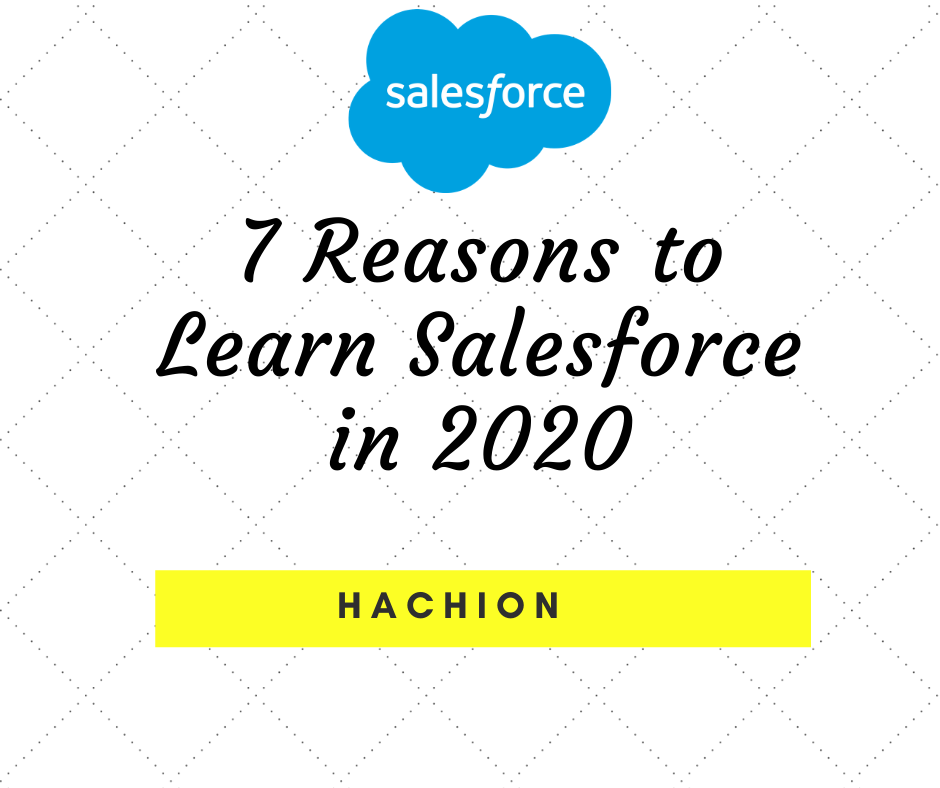
Tableau Interview FAQs
Basic Tableau Interview Questions and Answers
1. What is TABLEAU?
Tableau is the most powerful and fastest visualizing tool that is recycled in Business Intelligence(BI). production. It simplifies the basic data into an understandable pattern. Investigation of the data becomes faster with Tableau. The visualizations can be assembled in the form of dashboards. The visualizations or diagrammatic drawings of data can freely be accepted by the employees of the organizations who are at disparate levels.
2. What is data visualization?
Data visualization means the graphical depiction of data or information. We can use optical objects like graphs, charts, bars, and a lot more. Data visualization tools arrange an accessible way to see and accept the data easily.
3. List out Tableau File Extensions.
The down ones are a few sentences in Tableau:
- Tableau Workbook (.twb)
- Tableau Data excerpt (.tde)
- Tableau Datasource (.tds)
- Tableau Packaged Datasource (.tdsx)
- Tableau Bookmark (.tbm)
- Tableau Map Expert (.tms)
- Tableau Packaged Workbook (.twbx) – zip file complete .twb and external files.
- Tableau Preferences (.tps).
4. What is the latest version of Tableau Desktop?
Tableau Desktop's latest version is 2021.3(as of, 7thSep 2021).
5. Define LOD Expression.
LOD Expression stands for Level of Detail Expression, and it is used to run complex queries demanding many dimensions at the data sourcing level.
6. Define Heat Map.
A heat map is a graphical representation of data that uses the color-coding technique to represent different values of data. As the marks warmth up due to their greater value, dark colors will be shown on the map.
7. Define TreeMap?
TreeMap is a visualization that organizes data hierarchically and shows them as a set of nested rectangles. The size and colors of rectangles are respective to the attitude of the data points they project. Parent rectangles will be tiled with their child characters.
8. What is the difference between a Heat map and Treemap?
TreeMap Hot Weather MapIt represents the data hierarchically and shows them as a set of installed rectangles. It represents the data graphically which uses different colors to represent different values. It is used for comparing the categories with It is recycled for comparing the categories based on color and size. And also it is great in declaring the patterns based on capacity of the information.
The colors and size of rectangles are various to the values of the data points When their values are bigger or the thickness of the records, the data will be represented in dark color.
9. What is a parameter Tableau? And how does it work?
Parameters are dynamic values, we can change the constant values in calculations.
10. What are the different data types in Tableau?
Tableau supports below data types below. Data TypeMeaningExamplesStringCharacter Arrangement. Enclosed in ''.Tableau', 'World'Number (Whole)Integers9Number (decimal)Floating attitude.123.45BooleanThey are logical values.TRUE, FALSEDateDate"02/01/2015"Date & TimeDate and Time01 January 2019 05:55:00 PMGeographic ValuesGeographical ValuesIndia, Italy, Canada
11. Give a brief about the tableau dashboard.
Tableau dashboard is a group of different views that allows you to contrast different types of data simultaneously. Datasheets and dashboards are associated if any adjustment happens to the data that successive reflects in dashboards. It is the most dynamic approach to anticipate the data and consider it.
12. Define Page Shelf in Tableau.
- Page shelf breaks the views into a streak of pages. It displays a backup view on an individual page. Due to this feature, you can consider the effect of each field on the rest of the data in the view.
13. Define the story in Tableau.
The story can be careful as a sheet which is a collection of a series of worksheets and dashboards used to bear the insights of data. A story can be used to show the relation between facts and outcomes that impact the decision-making process. A story can be published on the web to the audience.
14. Give an overview of the facts and dimensions of the table.
Facts are numeric measures of data. They are stored in fact tables. Fact tables store the type of data that will be affected by dimension tables. Fact tables have external keys associating with importance tables.
Dimensions are expressive attributes of data. Those will be stored in the amplitude table. For example, customer’s information like name, number, and email will be stored in the element table.
15. State some ways to improve the performance of Tablea
- Reduce the capacity of data to discount the volume of data
- Reduce the number of marks on the view to escape information overload
- Try to use integers or Booleans in calculations as they are much faster than authority
- Hide untouched fields
- Use Context filters
- Reduce filter usage and use some different ways to complete the same result
- Use indexing in tables and use the same campus for filtering
- Remove unnecessary calculations and sheet
16. Explain different connection types in Tableau?
There are 2 connection types possible in Tableau.
Extract: Extract is a snapshot of data that will be copied from the data source and put into the Tableau repository. This snapshot can be bright periodically fully or incrementally. .
Live: It creates a direct connection to the data expert and data will be fetched straight from tables.
17. What are the different Joins in Tableau?
Tableau works the same as SQL. So, it supports all Joins available in SQL
- Left Outer Join
- Right Outer Join
- Full Outer Join
- Inner Join.
18. What is Data Modelling?
Data design is the analysis of data objects that are used in a business or other situation and also used as identification of the relationships among these data objects. It is the first step of doing object-oriented programming.
19. Define Dual-axis?
Dual-axis is recycled to show 2 measures in a single graph. Many websites like easily use this Dual-arbor to show the comparisons and growth rate.
20. Define the blended axis.
Multiple measures can be shared in a single axis so that all the marks will be shown in a single pane. We can blend measures by boring the 1st measure on one axis and the 2nd on the existing axis.
21. Define shelves and sets?
Shelves: Every worksheet in Tableau will have shelves such as columns, rows, marks, filters, pages, and more. We can control the marks by counting or excluding data.
Sets: The sets are used to figure out a condition on which the dataset will be prepared. Data will be incorporated together based on a condition. Fields which is responsible for organization are known assets. For example – students have grades of more than 70%.
22. Explain the limitation of context filters in Tableau.
Whenever we set a context filter, Tableau generates a temp table that needs to revive each and every time, whenever the view is triggered. So, if the background filter is changed in the database, it needs to recompute the temp table, so the performance will be decreased.
23. What is Mark Card in Tableau?
There is a card to the left of the view where we can drag fields and control mark properties like color, size, type, shape, detail, label, and tooltip.
24. Define published data source?
When you are ready to make a data source available to other tableau desktop users. You can announce it to the tableau server or online. Or else you can make it available by saving the same like fixed excel or text file.
25. Define dual axis?
Dual-axis is used to show 2 measures in a single graph. It allows you to compare 2 measures at once. Many websites like indeed use this dual-axis to show the comparisons and growth rate.
26. Define Bullet graph?
A bullet graph is a variant of Bar graph. It is responsible for comparing the performance of one measure with other measures.
27. Define Gantt chart?
Gantt Chart displays the progress of value over the period. It consists of bars along with the time axis. It is a project management tool. Here, each bar is a part of a task in the project framework.
28. Define a Histogram chart?
A histogram chart shows the circulation of continuous information over a period of time. This chart helps us to find extreme points, gaps, unusual values, and more concentrated values.
29. What are the file size limitations with Tableau?
In Tableau, there are no limitations with the file sizes. And moreover, there is no row or column limit to import the data.
30. What is Tableau Reader?
Tableau bookwarm is a free desktop application, where you can read and collabarate with the Tableau packaged workbooks. It can only open the files but cannot create new connections to the workbook.
31. What is the difference between published data and embedded data sources?
The published data source contains connection information that is independent of workbooks and can be used by multiple workbooks.
The embedded data authority contains connection information but it is associated with the workbooks.
32. What is the Hierarchy in Tableau?
When we are working with large volumes of data, especially data may be messed. With Tableau, you can easily create hierarchies to keep your data neat. Even if you don’t need it, it is built into your data, which you can easily conduct or organize the data and you can track the data easily.
33. What is a Column chart?
A column chat visualizes the data as a set of rectangle columns, as their lengths are proportional to attitude when they represent the data. The parallel axis shows the category to which they belong, and the perpendicular axis shows the values.
34. What is the Bar Chart in Tableau?
The bar graph visualizes the data as a set of rectangle bars, as their values are comparable to lengths when they represent the data. The steep axis shows the category to which they belong to and the parallel axis shows the values. So, the bar chart is a steep version of the Column chart.
35. What is the Line Chart?
The line chart is a popular type of informative way for visualizing the data, it connects the original data points to view the data. We can easily anticipate the series of values, we can see initiator over time or predict future values. The parallel axis holds the category to which it belongs and the parallel axis holds the values.
36. What is a Stacked Bar chart?
Stacked Bar Chart, confident of multiple bars damaged horizontally, one below the other. The length of the bar depends on the value in the data point. A deformed bar chart makes the work easier, they will help us to know the changes in all variables presented, side by side. We can watch the changes in their total and budget future values.
37. What is a Stacked Column Chart?
Stacked Column Chart, confident of multiple bars stacked vertically, one on another. The length of the bar depends on the value in the data point. A stacked column chart is the best one to know the changes in all variables. This type of chart should be sluggish when the number of series is higher than two.
38. What is an Area Chart?
An area chart is nothing but line chat, the area between the x-axis and lines will be color or patterns. These charts are typically used to represent combined totals over time and are the traditional way to display stacked lines.
39. How to download Tableau Public?
Step 1: Go to and arrive your e-mail address and click “ Download the App “.
Step 2: After downloading the file, run the file and follow the prompts to install the Tableau.
Step 3: Now, you can see the Tableau shortcut on your desktop.
Step 4: Double click on the icon, to load tableau public. Now you see the screen as below.
40. What is Context Filter and show the steps on how to create the Context Filter Tableau?
Context Filters are applied to the data rows before any other filters. They are defined to views, but they can be applied on selected sheets. They decide Aggregation and Disaggregation of data in Tableau
Step 1: Drag the subcategory dimensions to the row shelf and measure sales to the column shelf. Now choose the horizontal bar chart as chart type and again drag the sub-category amplitude to the filter shelf. Then we will get the following chart.
Step 2: Right-click on the Sub-Category field in the filter shelf and go to the Top fourth tab. Choose the option field, from the next drop-down and choose the option Top 10 by Sales Sum as shown in the following screenshot.
Step 3: Drag the element Category to the filter shelf. Give right-click on the general tab to edit and under that choose an instrument from the list. As you can see the result shows three subcategories of products.
Step 4: Right-click the Category: equipment filter and select the option Add to Context. This produces the final result, which shows the subcategory of products from the division Furniture which are among the top 10 subcategories across all the products.
Tableau Interview Questions and Answers For Experienced
41. What are the products offered by Tableau? Explain a few things about them.
Tableau has 4 main products.
- Tableau Prep: Tableau Prep is responsible for preparing data for analysis. This tool provides 3 coordinated views which provide us with a complete picture of data.
- Tableau Desktop: Tableau Desktop is the place where the analysis happens. It has powerful drag and drops analytics which is very easy to use. Through the desktop, you get your data insights quickly.
- Tableau Online: Tableau Online is a secure and scalable self-service analytics cloud tool. You can use it anywhere, anytime and it has eliminated the complexities of IT.
- Tableau Server: From small to large enterprises, Tableau server is used for fulfilling their BI requirements. This is an on-premise solution. This tool can take data from anywhere and shared it across the organization through the desktop or mobile browsers.
42. Differentiate parameters and filters in Tableau
Filters are the simpler and straightforward feature in Tableau. It applies to dimensions or measures directly. For example, to only show Gujarat or Karnataka in a State dimension, we can apply the filter on that. In Tableau, there are multiple UI options available for filters like radio buttons, drop-down lists, checkboxes, sliders, and more. Filters on sheets are also available in Tableau.
Parameters are like variables. They are complex and more powerful. Like a variable, a parameter can be used in calculations. So, that means, it only allows a single value. Parameters have the same UI options except for checkboxes because checkboxes don’t have a single value. For example, we can create a parameter for interest rate and period, and then we can use these parameters to calculate interest and principal payments.
43. Explain how many types of filters are available in Tableau?
Filters are used to provide the correct information to viewers after removing unnecessary data. There are various types of filters available in Tableau.
- Extract Filters – Extract filters are used to apply filters on extracted data from the data source. For this filter, data is extracted from the data source and placed into the Tableau data repository.
- Datasource Filters – Datasource filters are the same as extract filters. They also work on the extracted dataset. But, the only difference is it works with both live and extract connections.
- Context Filters – Context Filters are applied on the data rows before any other filters. They are limited to views, but they can be applied on selected sheets. They define Aggregation and Disaggregation of data in Tableau
- Dimension Filters – Dimension filters are used to apply filters on dimensions in worksheets. Dimension filters are applied through the top or bottom conditions, formula, and wildcard match.
- Measure Filters – Measure filters are applied to the values present in the measures.
44. Differentiate between Tiled and Floating in dashboards?
In a tiled layout, items don’t overlap. The layout will be adjusted according to dashboard size. In the floating layout, items can be placed on some other layers. Floating items can have fixed positions and sizes.
45. Categorize dimensions in Tableau?
Dimensions are divided into 9 various categories
Slowly ever-changing dimension: The value of the dimension changes over an amount of time for slowly ever-changing dimensions.
Example – student of worker
Chop-chop ever-changing Dimension: Value in the dimension is rapidly changing for chop-chop ever-changing dimensions.
Example – Age (It changes every second)
Unchanged Dimension: Values are constant for unchanged dimensions.
Example – Traffic Signals
Shrunken Dimension: A set of 1 dimension is termed as Shrunken Dimension.
Example – A week is Shrunken dimension for the month
Junk Dimension: Junk values or unrelated dimensions are termed as Junk Dimension.
Conformed Dimension: If any dimension is provided by various business areas, then such a dimension is termed as Conformed Dimension.
Example – Time (9-5) for any company or hospital or college
Degenerated Dimension: Degenerated dimensions have primary keys only without any matter of info.
Role enjoying Dimension: If one dimension is employed in multiple roles, then they are termed as Role enjoying Dimensions.
Example – Date for e-commerce site order (Date of Order, Date of Shipment, Date of delivery)
Inferred Dimension: Empty dimensions are called inferred dimensions. They are usually used in ETL.
Example – Customer email which he may not enter while submitting any form will be filled as null.
46. What is VIZQL in Tableau?
VIZQL is Visual Inquiry Language. It is a combination of VIZ and SQL. It is similar to SQL language. But instead of SQL commands, the VIZQL language converts data queries into visual images.
47. Explain the disaggregation and aggregation of data in Tableau.
Aggregation → The process of summarizing the data and viewing a single numeric value is called aggregation. Example – sum/avg of salary for each employee
Disaggregation →The process of viewing each transaction for analyzing all the measures both dependently and independently. Example – individual salary transactions for each employee.
48. State the components of the dashboard.
The dashboard consists of 5 components.
- Web: it consists of a web page embedded in the dashboard.
- Horizontal component: it is a horizontal layout container in which we can add objects.
- Vertical component: it is a vertical layout container in which we can add objects.
- Image Extract: it allows you to upload an image to the dashboard from a computer.
- Text: it is a small Wordpad where we can format and edit the text.
49. Differentiate discrete and continuous data roles in Tableau
Discrete data roles consist of values that are separate and distinct. Discrete data roles can take individual values within a range. For Example – cancer patients in the hospital, no. of threads in a sheet, state. Discrete values are displayed as blue icons in the data window and blue pills on shelves. Discrete fields can be sorted.
Continuous data roles consist of any value within the finite or infinite intervals. For Example – age, unit price, order quantity. Continuous values displayed as green icons in the data window and green pills on shelves. Continuous fields cannot be sorted.
50. What is the difference between Traditional BI Tools and Tableau?
Traditional BI Tableau BI Architecture has hardware limitations. Tableau does not have dependencies. It does not support in-memory, multi-thread, and multi-core computing. It supports memory when using advanced technologies. It has a predefined view of data. It uses predictive analysis for various business operations. We should need a good knowledge of BI and skills. It is easy working and understand without the knowledge of BI and the skills data security is provided Data security is not provided for the public, whereas in the professional version.

 +1-732-485-2499 |
+1-732-485-2499 | 



















